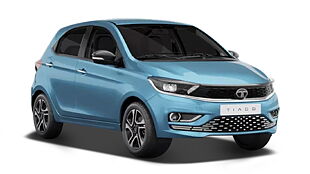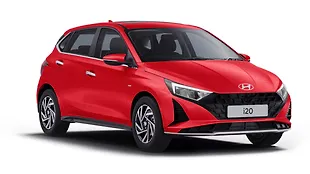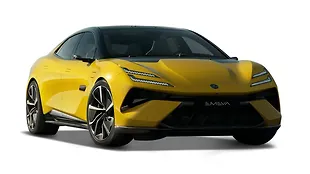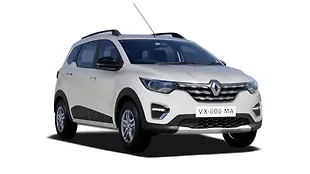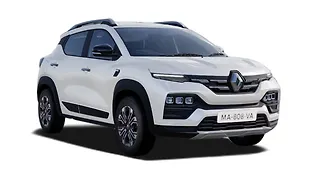Look Ma, no hands

Autonomous cars seem to be the way forward. With each passing day more manufacturers seem to be jumping on the bandwagon to develop driverless cars.
While the idea is not new, its fruition into real life has only been recent after manufacturers like Tesla, Audi, Mercedes-Benz and BMW put their weight behind this new form of transportation.
There’s basically five levels of autonomous driving with each succeeding one requiring lesser human intervention i.e. at level 5 (the highest) there’s no need for steering, pedals or for that matter anything that would allow a human being to intervene. This would essentially turn the car into a tool to take you from to place to place while letting you do your thing (whatever that may be).
The current generation Mercedes-Benz S-Class that is on sale in India offers level-2 of this technology. When you enable the system it will do stuff like keep you between the lines, brake automatically and obviously semi-autonomously park itself in a suitable slot. It’s a bit unnerving, to say the least, to take your hands off the steering wheel and watch the car drive itself even if it is only for 30 seconds at a time.
Scale of things

So you can imagine my expectations when I saw that my itinerary for my trip to Paris with Renault also included a drive in an autonomous car. To say the least, I was expecting a controlled environment where I would get behind the wheel and the car would take a predefined route. During the drive, I would be asked to take my hands off the wheel briefly which would then be followed by some uncontrolled laughing stemming from both amazement and apprehension. The experience would then leave me, for the rest of the day, in a mixture of wonder and badly typed but rather excited Whatsapp messages (I have fat fingers).
Okay, so I got all of that, just not on a scale that I had expected.

The controlled environment turned out to the be a large part of the campus of Paris-Saclay University complete with other vehicles and pedestrians and well, the car was a level 4 autonomous enabled Zoe EV!
The real deal

Renault, in collaboration with the University of Paris Saclay, is working on developing shared mobility services and this autonomous Zoe sits at the forefront of the French automaker’s efforts. Using the campus of the university, there’s a ride-hailing app called Marcel that lets you seek out the nearest car and much like how you would book a taxi in conventional terms (select- sit-go) you can do the same here too. Well, at least that’s how the system is being developed and should hopefully stay the same in its final iteration.

EVs are being developed in parallel with ride-sharing services and it has now reached a point where both have crossed the same junction and will continue to develop together. With a large number of people shunning everyday use of cars for such services, it seems like a prudent time for such services to develop.
Autonomous drive experience

The campus at the University of Paris-Saclay is so green and blue at the same time, it’s hard not to imagine yourself in some resto-mod version of a Monet painting. It’s no wonder that the gleaming blue Zoe EV in the pictures fit perfectly with the environment. But this is no ordinary version of Renault’s rather cute looking budget electric hatchback. What you see in the photos is an autonomous EV and that too, one with level four capabilities in terms of driving ability.

The car that we sat in had a three-seat lounge like layout and the whole cabin gets this blue ambient lighting that comes on when it switches to autonomous mode just to ensure that you know what you are up to.

Giving the power of autonomy to this Zoe EV are wide range cameras, sensors Radars and LIDARs. In addition, the test team has also fitted external sensors in various locations on the test route and also taps into cameras around the campus to keep track of the cars. Once a cab has been selected and it shows up, all you have to do is get in, register with the on -board computers that you have got in and the cab sets off.

As a safety measure and in keeping with government regulations, there is always an emergency driver behind the wheel. Further, Renault only sends out the Zoes in pairs (one autonomous and one with a driver) as a safety measure and also because the testing equipment is incredibly expensive. There is a sense of, I would like to say, surprise, when you see an autonomous vehicle set off for the first time- especially while sitting in it! On the go, the cars are limited to 30kmph (the eventual goal is 50kmph) and follows traffic rules down to the T, unlike our own jugaadu drivers .
It stopped at every junction, obeyed signals, detected human beings and took the necessary action to avoid them. There wasn’t a single moment where the driver had to intervene and instead he sat ice-cold calm and focussed the whole way with his hands off the wheel.
Upgrades

But… it’s not the final version and currently, the prototypes are based on the previous generation Zoe. The car that’s supposed to make it to the road finally is the one in the pictures below. It was showcased at the Viva Tech Show 2019 alongside three other urban mobility concepts (Do read our report about the Renault Viva tech pavilion by clicking here). This one is longer with a single scissor-style door on the kerb side and an improvement on the lounge-like seating arrangement for three people. It does have a driver cabin but that’s completely cut off from the passengers and at level 5 autonomy, it may even become another seat for additional passengers.
The road ahead

The automaker has broadly outlined two goals- Technology, with an autonomous transportation system comprising two types of supplementary service; and acceptability, with user panels to study ridership. Sources at the drive experience hinted that it would not be hard to pump massive amounts of money into the programme to speed up development. But that would push up the cost of the programme, massively removing its cost effectiveness. This is why Renault has decided to take a lengthier route and spend more time developing the components.
But what about India?

We are not too far away from getting electric cars in India but still some way off in them arriving here in a large scale and affordable way. The Zoe as an EV looks quite promising for India and if Renault brings it here within the next few years, they will become one of the early adopters in the country. As for bringing autonomous technology to India, well, that’s a story for another day and realistically speaking, the company that cracks autonomous vehicles for India will become like the Microsoft of the car world.

![Renault Kwid [2019] [2019-2019] Image Renault Kwid [2019] [2019-2019] Image](https://imgd.aeplcdn.com/272x153/cw/ec/39224/Renault-Kwid-Right-Front-Three-Quarter-157741.jpg?wm=0&q=80)
![Renault Kwid [2019] [2019-2019] Right Front Three Quarter Renault Kwid [2019] [2019-2019] Right Front Three Quarter](https://imgd.aeplcdn.com/199x112/cw/ec/39224/Renault-Kwid-Right-Front-Three-Quarter-157741.jpg?wm=0&q=80)
![Renault Kwid [2019] [2019-2019] Rear View Renault Kwid [2019] [2019-2019] Rear View](https://imgd.aeplcdn.com/199x112/cw/ec/39224/Renault-Kwid-Rear-view-153645.jpg?wm=0&q=80)
![Renault Kwid [2019] [2019-2019] Rear View Renault Kwid [2019] [2019-2019] Rear View](https://imgd.aeplcdn.com/199x112/cw/ec/39224/Renault-Kwid-Rear-view-170379.jpg?wm=0&q=80)
![Renault Kwid [2019] [2019-2019] Dashboard Renault Kwid [2019] [2019-2019] Dashboard](https://imgd.aeplcdn.com/199x112/cw/ec/39224/Renault-Kwid-Dashboard-170368.jpg?wm=0&q=80)
![Renault Kwid [2019] [2019-2019] Dashboard Renault Kwid [2019] [2019-2019] Dashboard](https://imgd.aeplcdn.com/468x263/cw/ec/39224/Renault-Kwid-Dashboard-170369.jpg?wm=0&q=80)
